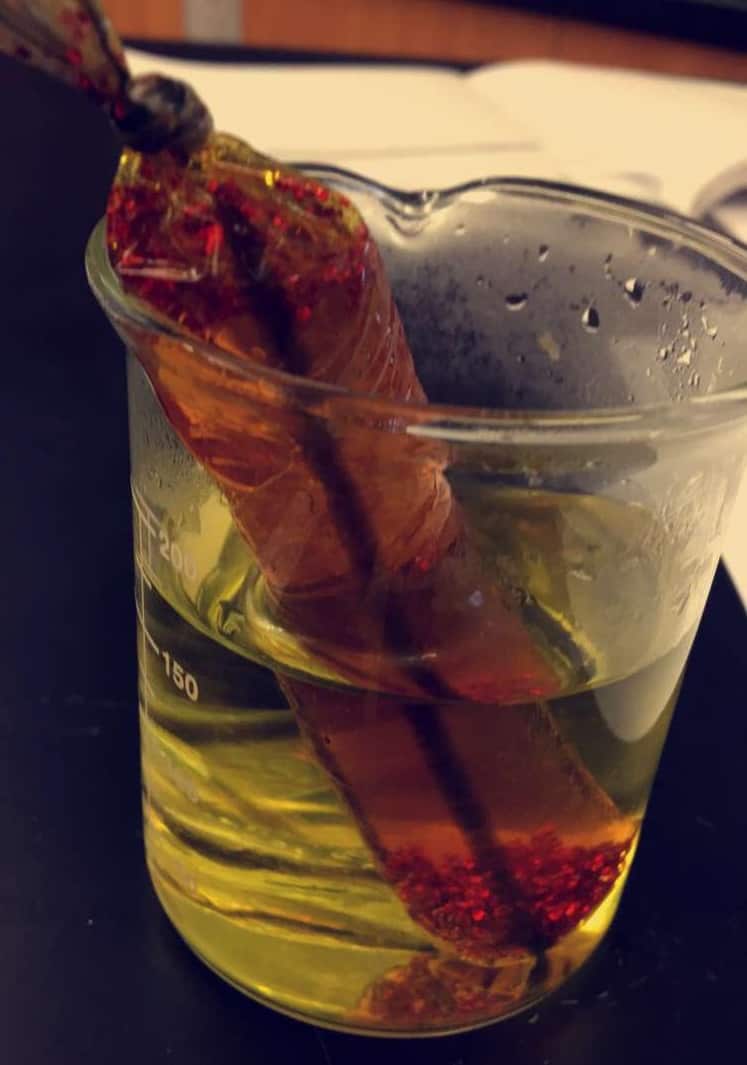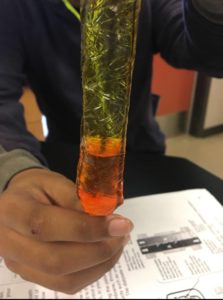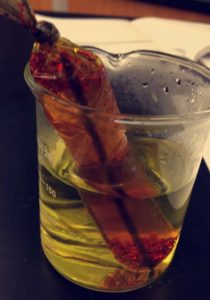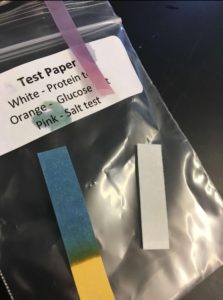
Before you use the Kidney Dialysis kit, check out these tips from Judy Barcelon. Judy is a Biology and Health Science teacher at Piner High School in Santa Rosa, CA. Her enthusiasm for science and teaching is so evident as she shares her experience with this kit.
Our case begins with a female patient suffering from kidney failure and needing dialysis.
Most of my students do not know what dialysis is, so before diving into the Kidney Dialysis kit, I ask ed students with some experience to tell the others about it.
ed students with some experience to tell the others about it.
Using the picture to the right and their elbow partner to the left, students brainstormed what the kidney dialysis process entails. Then we watched this video titled “How does dialysis work” to better understand the context of the lab.
Ready, set…not quite! Do your students know exactly how the kidney works? Mine needed a tune up, and there’s nothing like a TedEd talk to get the process started! Use this four-minute video by Emma Bryce to review some of the basic structure and function of the kidney. For additional assignments may I suggest that you choose your level of follow up from their great online resource page. I also had students cut, paste and summarize the function of the kidney, the components of urine, and the notion of how the kidney maintains homeostasis by balancing out the processes of filtration and absorption.
On with the case! To build interest, I made up an artificial blood tube as described in Step 3 on page 2 of the Kidney Dialysis student lab handout. We reviewed what’s in the blood, how it got there, and how the body wants to maintain homeostasis. At this time, I also had students transfer the 3 column chart from page 3 of the handouts to their notebooks and then complete column 1, to predict which substances (urea, red blood cells, proteins, glucose, or salts) will diffuse through the dialysis membrane.
 Students were eager to make their own artificial blood tubes, and we found it easier to cut off the tips of the pipettes to ensure transfer of all of the “blood” to the dialysis tubing. We also had one blowout of the dialysis tube knot, so I suggest that students maybe do a test pour with water to ensure a good seal.
Students were eager to make their own artificial blood tubes, and we found it easier to cut off the tips of the pipettes to ensure transfer of all of the “blood” to the dialysis tubing. We also had one blowout of the dialysis tube knot, so I suggest that students maybe do a test pour with water to ensure a good seal.
With the dialysis tube bags all nestled in cups of hot water, students used their 10 the notion of how the kidney maintains homeostasis by balancing out the processes of filtration and absorption.minute wait time documenting their knowledge of dialysis in their lab notebooks, as part of the research component of our course. Each team was given the color handouts on Peritoneal Dialysis and Hemodialy sis (included in the kits) and they completed questions 7 – 10 in Part 3 of the kit. I also made smaller individual copies of the dialysis diagrams for them to cut, paste, and summarize in their science notebooks.
sis (included in the kits) and they completed questions 7 – 10 in Part 3 of the kit. I also made smaller individual copies of the dialysis diagrams for them to cut, paste, and summarize in their science notebooks.
Ten minutes went by fast, and students eagerly got their test strips to determine what substances diffused into the dialysate. I encouraged student groups to complete the answers to the questions in “round robin” fashion with each person taking a turn at answer construction under group guidance. In addition, students completed their individual answers for column 2 of the chart to answer which substances (urea, red blood cells, proteins, glucose, or salts) actually diffused through the dialysis membrane.
Next step – critical thinking! Student readers set the stage with the information box on page 5 (Maintaining Homeostasis). The questions led students to the right place, and dialogue was rich to determine how to accurately complete column 3 of the chart, to answer which substances (urea, red blood cells, proteins, glucose, or salts) should be added to the dialysate in order to maintain homeostasis.
Groups seemed to self-challenge about how they could modify the dialysis model to test if indeed there would be any movement if glucose was on both sides of the membrane (seems almost possible with glucose test strips!). I was also impressed that they used the word “isotonic” in their discussions.
My st udents were engaged in this great lab activity, even to the point they became obsessive about getting every “blood cell” out of the tube! I liked the connection to medical science, and a lab such as this Kidney Dialysis kit gives students more incentive to enroll in our Health Science elective program. I also chose this activity to kick off our school-wide thematic unit on Survival, as we will explore how medical technology helps us to survive.
udents were engaged in this great lab activity, even to the point they became obsessive about getting every “blood cell” out of the tube! I liked the connection to medical science, and a lab such as this Kidney Dialysis kit gives students more incentive to enroll in our Health Science elective program. I also chose this activity to kick off our school-wide thematic unit on Survival, as we will explore how medical technology helps us to survive.
Submitted by: Judy Barcelon, Science Teacher and super fan of Science Take-Out kits. 